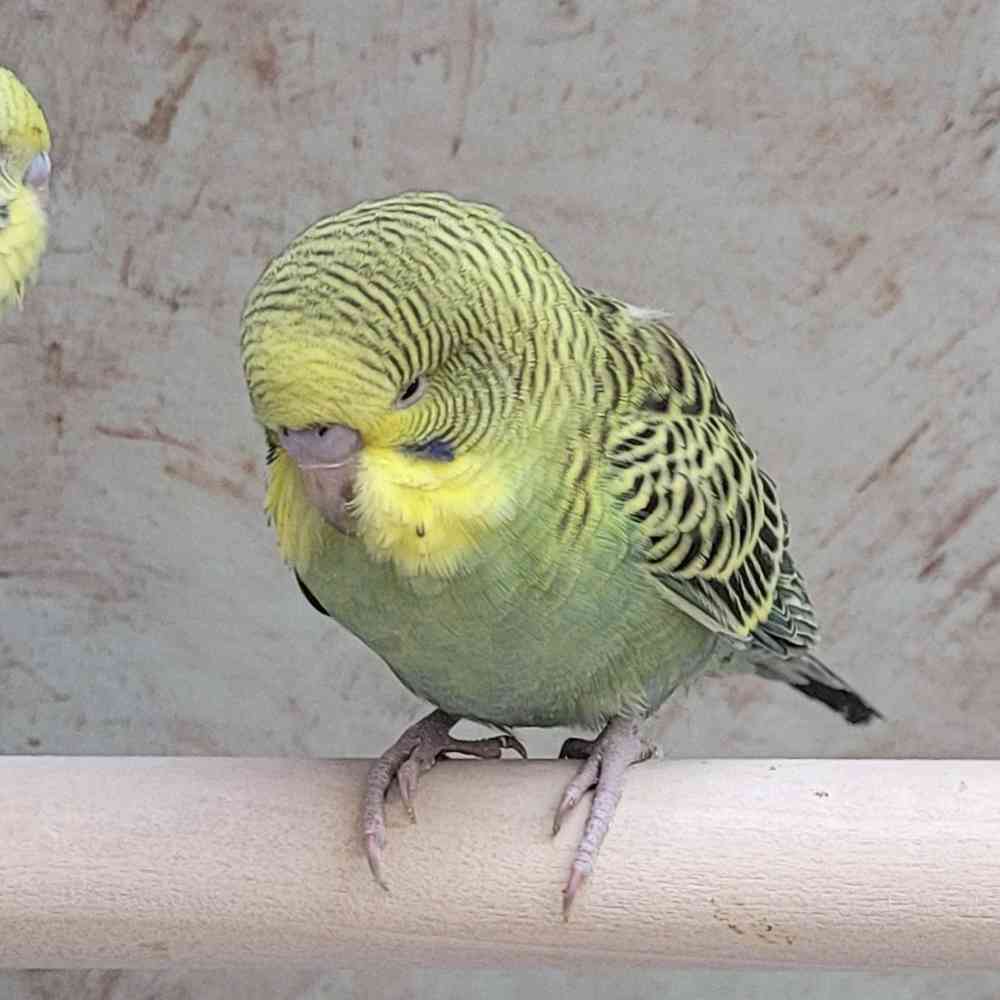Parakeet

Interesting to know:
Parakeets make very good pets as long as they have a lot of attention and love. These birds are very social by nature and don’t like to be left alone. If you own only one bird and you work 8 hour days, think about possibly getting him a mate to keep him company. Parakeets are monogamous, so once they find a mate, it is usually for life. However, if one of them has an untimely death, the other will find another mate. Parakeets are gentle birds that will not harm children or pets and are great for beginners.
Parakeets come in over 100 color forms but primarily in green (typical in the wild), various shades of blue, white, gray and yellow. Parakeets are 7″ to 9 3/8″ in length from bill to tail. The life expectancy of the average parakeet is 12 to 14 years.
Environment:
Be sure the spot you pick for your cage has good light and is well ventilated, though free from drafts. It should be away from doors and windows where direct exposure to sunlight can make it overly warm. Also, placing it at eye level or higher will make the bird feel more secure. Average daytime temperatures can range from between 60oF to 70oF with nighttime temperatures down to 40oF. As a rule of thumb, ambient temperatures comfortable for you should be adequate for your bird. Whether your bird is sick or healthy, be sure to watch for tell-tale signs of temperature-related discomfort: cold birds will often remain fluffed up for extended periods of time, and overheated birds will hold their wings away from their bodies and pant. The cage should be covered at night to retain heat and prevent disturbances.
Habitat:
Parakeets are very playful birds, so be sure to provide a roomy cage with plenty of toys and perches. The minimum dimensions for a cage are 20″ long x 12″ deep x 18″ high, however the ideal size is 40″ long x 20″ deep x 32″ high. A cage with horizontal bars on the sides is nice, as they love to climb. Provide one or two perches about ¾” in diameter and dishes hanging from the side for feed and water. Try to place the perches away from dishes so the food and water dish do not become soiled with bird droppings. Fresh branches from trees and bushes such as oak, maple, and fruit trees will give hours of chewing and climbing pleasure while exercising and trimming the beak and nails. Change the branches once they start to dry out. Do not use sandpaper perch covers as these can cause serious foot irritation and infection.
Free flying time is very important. Try to offer several hours a day in a bird safe room. A bird-safe houseplant is a great playground for any parakeet. Set it across the room from the cage, so that they fly back and forth. This will provide them with ample exercise and entertainment. Be sure to provide your parakeet with toys and mentalstimulation. Rotate toys after a month or so to discourage boredom. A shallow bath is a great joy for a parakeet. This should be in addition to any water dishes in the cage. Plastic planter dishes work great- fill it with lukewarm water and place on the cage floor away from any perches. Clean it daily as you would the bird’s other dishes.
Diet:
Fresh food and water must be provided daily. Although seed has been the traditional staple of a bird’s diet, most experts recommend pelleted food as the way to go. Seed mixes provide variety, but they do not always provide optimum nutrition, and are definitely on the messy side. We recommend a high-quality pelleted food that’s formulated for your bird’s species. Be sure to offer fresh veggies and fruits to your bird every day. Dark, leafy greens are packed with vitamins, and many birds also enjoy grated carrots and broccoli. Common fruit favorites are apples, pears, melon and kiwi. Take care to remove any uneaten food after a couple of hours, and please do not give your bird avocado, cherry pits, rhubarb or apple seeds: these are toxic. Cuttlebones are necessary for added calcium and to keep your parakeet’s bill trim.
Handling & Training:
Take it slow at first and let the parakeet get used to you and its new surroundings. The key to training is trust (from your bird) and patience (from you). When you need to hold your parakeet, place your palm on it’s back and wrap your fingers around the bird with your thumb and forefinger on either side of its head. Parakeets sometimes do bite, but it is not usually a painful or dangerous.
Health & Veterinary Care:
If taken care of, the parakeet is a hardy pet well worth the money and effort! The most common problem with parakeets is feather plucking. This is usually caused from loneliness and boredom. This is why it’s important to interact with your bird and provide it with a friend.
Some signs of illness to be aware of are droppings that are not black and white, feathers that are ruffled, lack of appetite, wheezing, molting out of season, and lethargy. Some of the common illnesses and injuries your parakeet could contract are broken wings or legs, cuts and open wounds, overgrown beaks and nails, ingrown feathers (feather lumps), feather picking, false molt caused by mishandling or a poor diet, confinement cramps in the legs from a cage that is too small, weight loss, heat stroke, shock, concussion, egg binding, diarrhea, mites, colds, baldness, scaly legs, sore eyes, tumors, loss of song, constipation and diarrhea. Contact your vet immediately if you suspect any injuries to your feather friend!
All our Pets have found their homes. Please enter your contact information below so we can get in touch with you when we have found the perfect Pets for your family.
